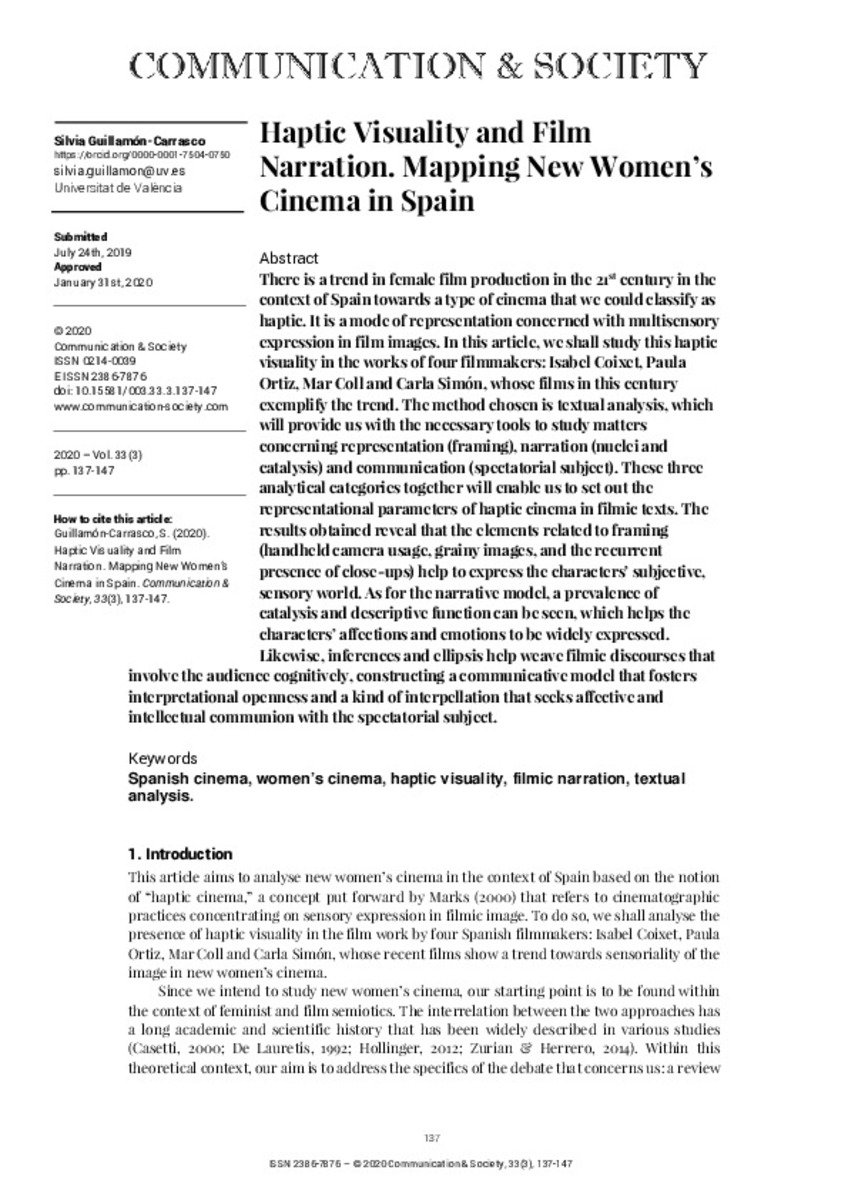Haptic Visuality and Film Narration. Mapping New Women’s Cinema in Spain
Fecha de publicación :
2020
Editorial :
Servicio de Publicaciones de la Universidad de Navarra
Cita:
Guillamón-Carrasco, S. (Silvia). "Haptic Visuality and Film Narration. Mapping New Women’s Cinema in Spain". Communication & Society. 33 (3), 2020, 137 - 147
Aparece en las colecciones:
Estadísticas e impacto
0 citas en

0 citas en

Los ítems de Dadun están protegidos por copyright, con todos los derechos reservados, a menos que se indique lo contrario.








